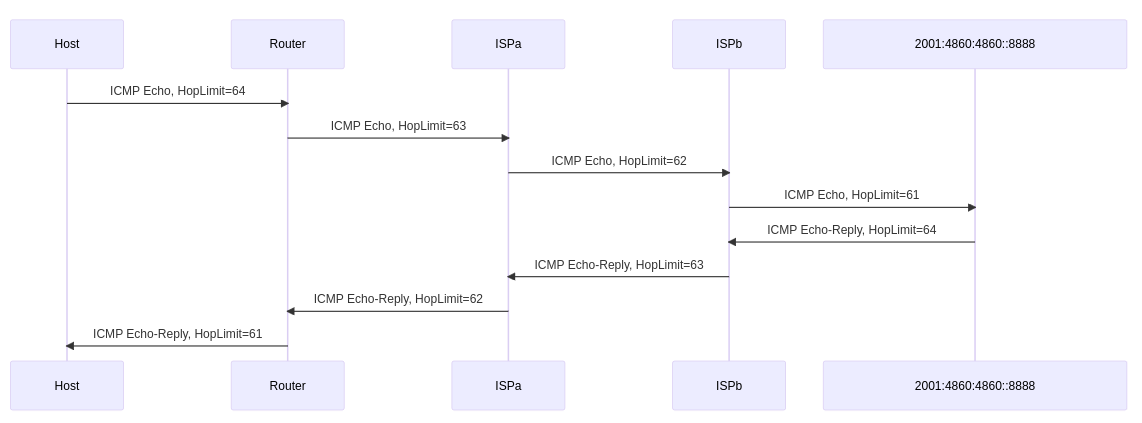Performs an ICMPv6 ping request using this online tool. For example, try 2001:4860:4860::8888 or google.com to check their ping6 response.
Interested in a ping4 request instead? Try ping4.network instead.
Checkout Ping6 stats.
How does ping6 work?
When ping6 is called, an ICMPv6 packet is generated at the host calling the ping6 program. Most people are connected to the Internet by a router at their home, so the packet is sent there next, and then from the router to the ISP. If the ISP can find a route to the end host, it will forward the packet (perhaps across many more hops) until it reaches the ISP of the destination device (or perhaps some hosting provider network like AWS, GCP, Azure, etc).
At each hop along the way the HopLimit field in the IPv6 packet is decreased. If the HopLimit field reaches 0, the ICMPv6 packet is dropped. An ICMP reply may also be sent back to the source indicating that the host is not reachable. This may also occur if a device along the path cannot locate a route to the destination.
If the packet does successfully reach the intended destination, the destination generates an ICMP-reply packet with a new HopLimit, which is then decreased for every hop on the route back to the source. When the ICMP-reply is received at the source, the ping program outputs a line of text with the round trip time (RTT) which is the time between when the packet was sent and when the reply was received.
If ping6 is called with a hostname instead of an Ipv4 address, it may kick off a DNS request to resolve the Ipv6 address of the hostname prior to generating the ICMPv6 packet.
